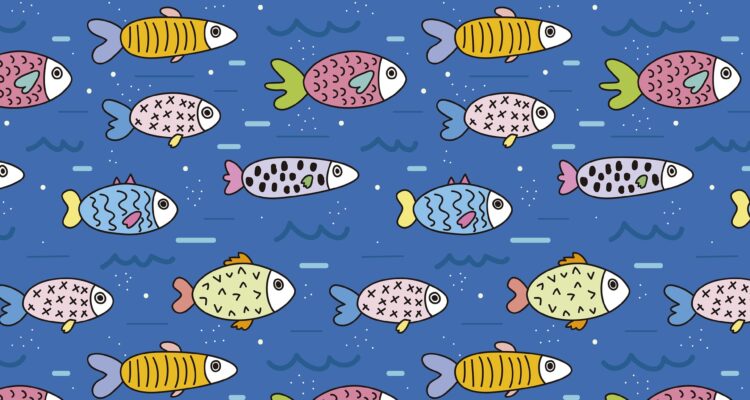◊ By Karthik Pulugurtha & Haven King-Nobles
In 2016, the central government announced an ambitious target to double farmers’ incomes by 2022. This includes the aquaculture sector, which employs over 6 lakh people in Andhra Pradesh alone.
However, it will be very difficult to double fish farmers’ incomes if half their fish are dead.
Such mass mortalities are unfortunately all too common in the aquaculture industry, which is, today, plagued by disease.
These ailments often result from a vicious cycle: Fish farmers, knowing that many of their fish will die before slaughter, stock more fish in the ponds.
These fish live their lives in crowded and unsanitary conditions, while being bombarded with antimicrobials that seek to keep them alive long enough to reach slaughter.
Inevitably, disease outbreaks still occur. The result is that more financial inputs are required: for purchasing greater number of fish, for purchasing greater quantities of feed, and for purchasing more antimicrobials and chemicals.
Sometimes this system does pay off. Farmers raise a tonne of fish, and then can make a profit selling all of them.
But, too often, it backfires. Diseases and mortalities ravage the fish farm, and the farmer ends up with a loss.
Fish farmer, Mansoor SK of Nellore, describes how farmers often panic when they see the first signs of disease in their ponds, and use whatever chemicals that are available. Last year, Mansoor lost nearly half his fish.
This boom and bust cycle of fish farming is broken. It’s not good for the fish, who suffer significantly in such conditions, or for farmers, who can never count on a stable income. And it’s certainly not good for you, the consumer, as your rupees end up funding a system that brings you fish raised in filthy environments laden with chemicals.
We need a paradigm shift in how India farms fish.
Where should we look to for a better model for this industry? Current models for sustainable agriculture can also be applied to aquaculture.
For instance, Zero Budget Natural Farming (ZBNF) has gained significant popularity of late for its ability to ensure livelihoods for farmers without them having to rely on high-cost chemical inputs.
It does this by substituting expensive chemical inputs with more natural farming and fertilisation techniques, creating agriculture that is less intensive but more sustainable for the incomes of farmers. ZBNF has been embraced by the Andhra Pradesh government, and is currently being used by over 5 lakh farmers in Andhra alone.
Sustainable terrestrial farming systems like ZBNF indicate the way forward for aquatic farming systems. Instead of trying to cram in as many fish as possible with overdoses of chemicals in a futile bid to pre-empt disease, fish farmers should lower the quantity of fish per pond.
Our organisation, Fish Welfare Initiative India Foundation, has been meeting with fish farmers to understand the problems they face, and provide them with complimentary water quality testing kits.
We have noticed some trends: The farmers in one district we worked with, Visakhapatnam, use significantly lower densities of fish than the two other districts we work with, following more extensive (rather than intensive) practices. And the result?
These farms had significantly better water quality than that of any other farms we tested, and 9 out of 10 of the farmers there said disease was unheard of in their farms.
An increase in fish welfare does not mean a decrease in farmer welfare. As with all forms of agriculture, aquaculture is an interwoven web of connections between sustainability, animal welfare, public health and food production. What benefits one often benefits the other. As ZBNF has demonstrated, this is not a zero sum game.
Caring for the welfare of farmed fish can be a guiding principle for better, more sustainable aquaculture practices.
With this in mind, we’ve launched the Alliance for Responsible Aquaculture, a collaboration between fish farmers and local NGOs to improve standards in aquaculture in a way that benefits fish, farmers and consumers.
Now where does this leave you, the consumer?
If you buy fish, we encourage you to buy it from sources that are traceable. Currently, most of the fish supply in Andhra passes through multiple layers of middlemen from farm to consumer, and no one really understands where the fish came from.
Each middleman decreases the income the farmer will receive, and further obfuscates to the consumer how the fish were actually raised.
Lengthy and opaque supply chains make it difficult for farmers to know that there are consumers, like you, to whom sustainability and animal welfare matter.
Therefore, consumers must do their part by opting for ethically sourced fish. Only through this collaborative, multipronged action will we be able to change the cruel and impractical practices in aquaculture.
The authors are with, Fish Welfare Initiative India Foundation, an NGO working towards the welfare of farmed fish.



Leave a Reply